Over the past few weeks, we have been discussing health and illness in Traditional Chinese Medicine (TCM).
According to TCM, a person is healthy when there is specific yin-yang and qi balance of the Functional Entities.
The functional entities are:
- The Five Fundamental Substances: Qi, Xue (Blood), Jinye (Body Fluids), Jing (Essence), and Shen (Spirit).
- Zang-fu: A Wu Xing cycle of 5
zang organs, 6 fu organs, and their functions - Jing-
luo : The channels or meridians through which qi flows
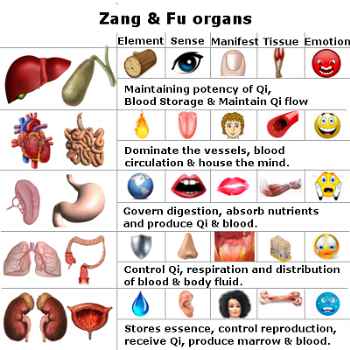
The functional entities are responsible for performing the five cardinal functions that maintain health within the body. The cardinal functions are:
- Actuation-Locomotion of the Five Fundamental Substances.
- Warming-Regulation temperature
- Defense-Protection against foreign pathogens
- Containment-Prevention of excessive drainage of different
jinye - Transportation-Converting nutrition and breathing into qi,
xue , andjinye
If there is a
Given the importance of qi in Oriental Medicine, it necessary to understand the TCM concept Zang-fu.
What is Zang-fu?
The Zang-fu is a collection
Zang organs: Zang (脏) refers to the five organs that are
- Heart: Responsible for storing
shen . Physically, it governs blood and the meridians. Emotionally, it controls joy.
- Spleen: The Spleen is one of the most dynamic organs. It is responsible for the transportation of essential qi and
xue (blood) from nutrition and water, and actuating them to the other Zang It also helps to containxue within the meridians. Physically, it governs the limbs. Emotionally, it controls pondering.
- Lung: The primary function of the lung is the actuation of pectoral qi, which is produced by breathing. Physically, it governs the skin and hair. Emotionally, it controls grief.
- Kidney: The kidney is a dynamic organ. It is responsible for the containment of
shi , which guides conception, development, birth, and growth. Physically, it is responsible for producing marrow. - Liver: The primary function of the liver is to ensure that
qi can flow freely through the meridians. It also stores blood and maintains the tendons.
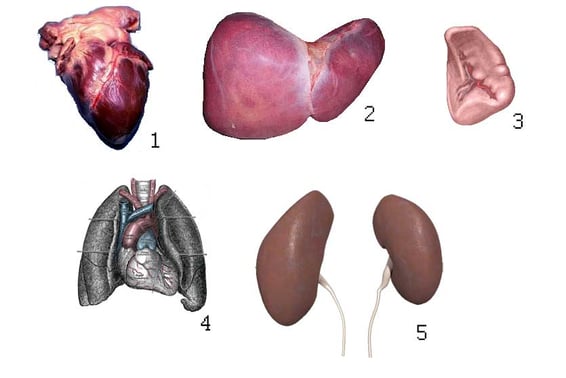
fu organs:
- Stomach- The stomach is considered to be of primary importance in TCM. It is here that food and water are first digested and nutritional qi is extracted. After food is digested, it is sent to the small intestine, for further purification.
- Small Intestine- The small intestine connects with the stomach and its main function is to further purify the nutrition that was partially digested by the stomach from a turbid into a clear substance. After purification, it transports the clear substance throughout the body, while expelling the turbid.
- Large Intestine-It’s primary function is to receive waste material from the small intestine and to absorb any remaining good fluids while transforming the remaining waste into feces.
- Urinary Bladder- As the small intense purifies fluids, its sends turbid fluids to the urinary bladder, whose primary function is to store and discharge urine.
- Gall Bladder: The gall bladder is attached to the liver and its primary function is to transform any of the liver’s remaining qi into bile.
- Sanjiao: It should be noted that the Sanjiao does not have a Western anatomical equivalent. Roughly, it can be thought of as 3 placeholders/cavities or jiao for the organs within the body’s trunk. The 3 jiao are:
- Upper jiao: holds the heart and lung
- Middle jiao: holds the spleen and stomach,
- Lower jiao: holds the kidney and urinary bladder.
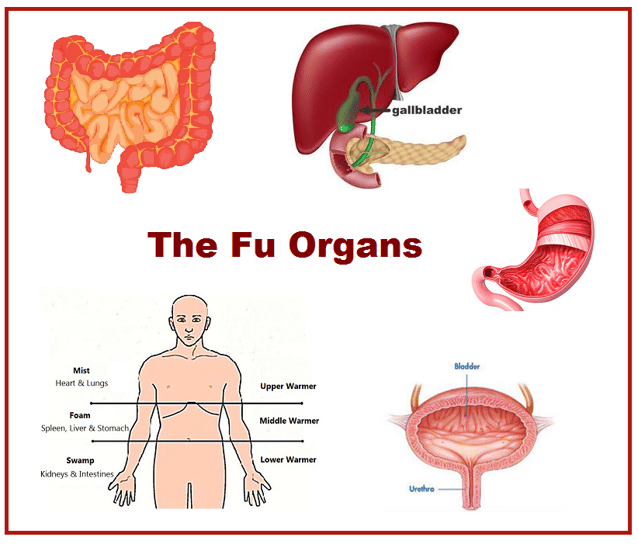
Zang-fu as a Wu Xing Cycle:
As mentioned earlier, each of the Zang-fu organs has a yin-yang pair and follows a Wu Xing cycle. Wu Xing, which translates into the Five Phases or Five Elements, is the notion that the change of the cosmos occurs in a cyclical pattern of five stages.
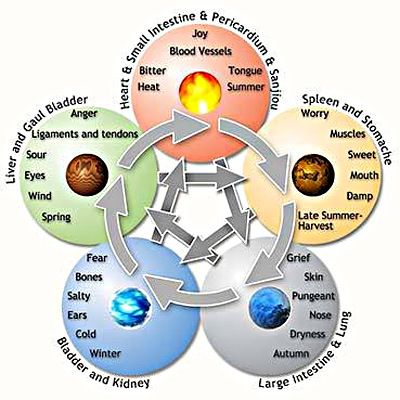
This means that each Zang-fu pair corresponds to one of the Five Elements and that they interact in a cyclical function with each other. The chart below helps demonstrate this relationship.
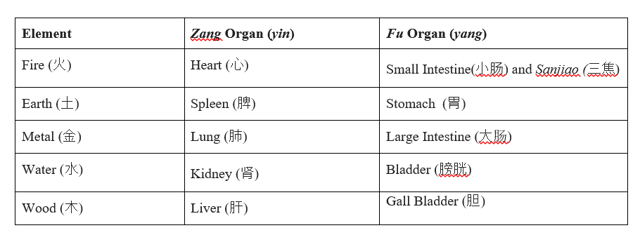
As mentioned previously, the Five Fundamental Substances are what make and sustain life. Given that the Zang-fu organs help produce and maintain the substances, their importance in Traditional Chinese Medicine cannot be understated.
What has yet to be discussed is how the fundamental substances travel from the organs to the rest of the body. In the next installment of this series, we will discuss the concept of the Jing-
If you’ve enjoyed following this blog series on philosophy and Traditional Chinese Medicine, then you should consider a career in acupuncture and Oriental Medicine. Our Master’s in Oriental Medicine program dives deep into these various concepts and gives you the hands-on opportunity to practice acupuncture as a part of our clinic internship program.
The college is located in Miami, FL. If you have any questions, please feel free to email our admissions director, Joe Calareso at admissions@amcollege.edu or call the school at 305-595-9500.
Download the guide below to learn more about a career in acupuncture.
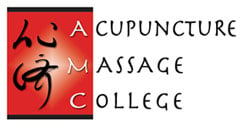
 (305) 595-9500
(305) 595-9500







